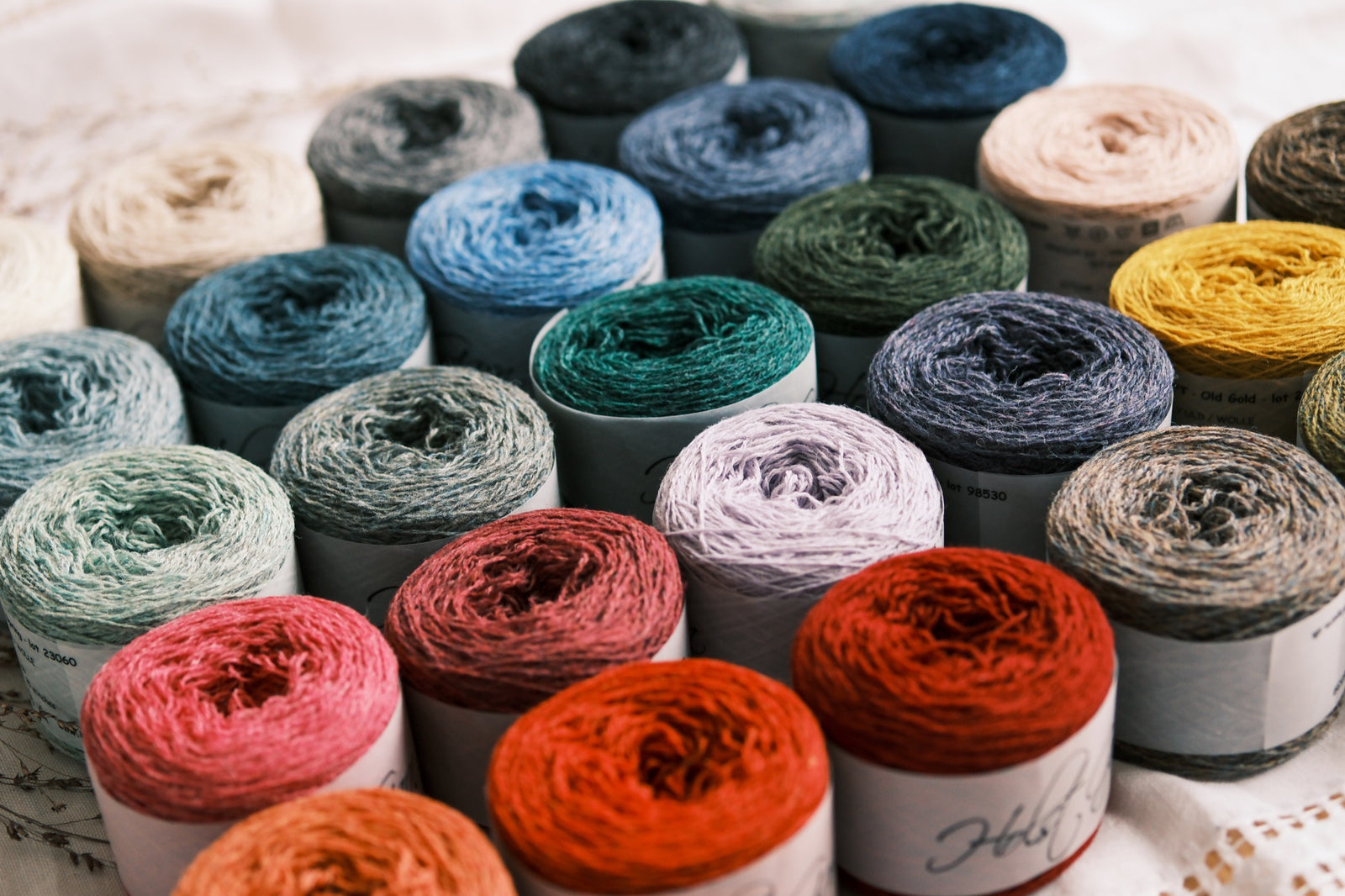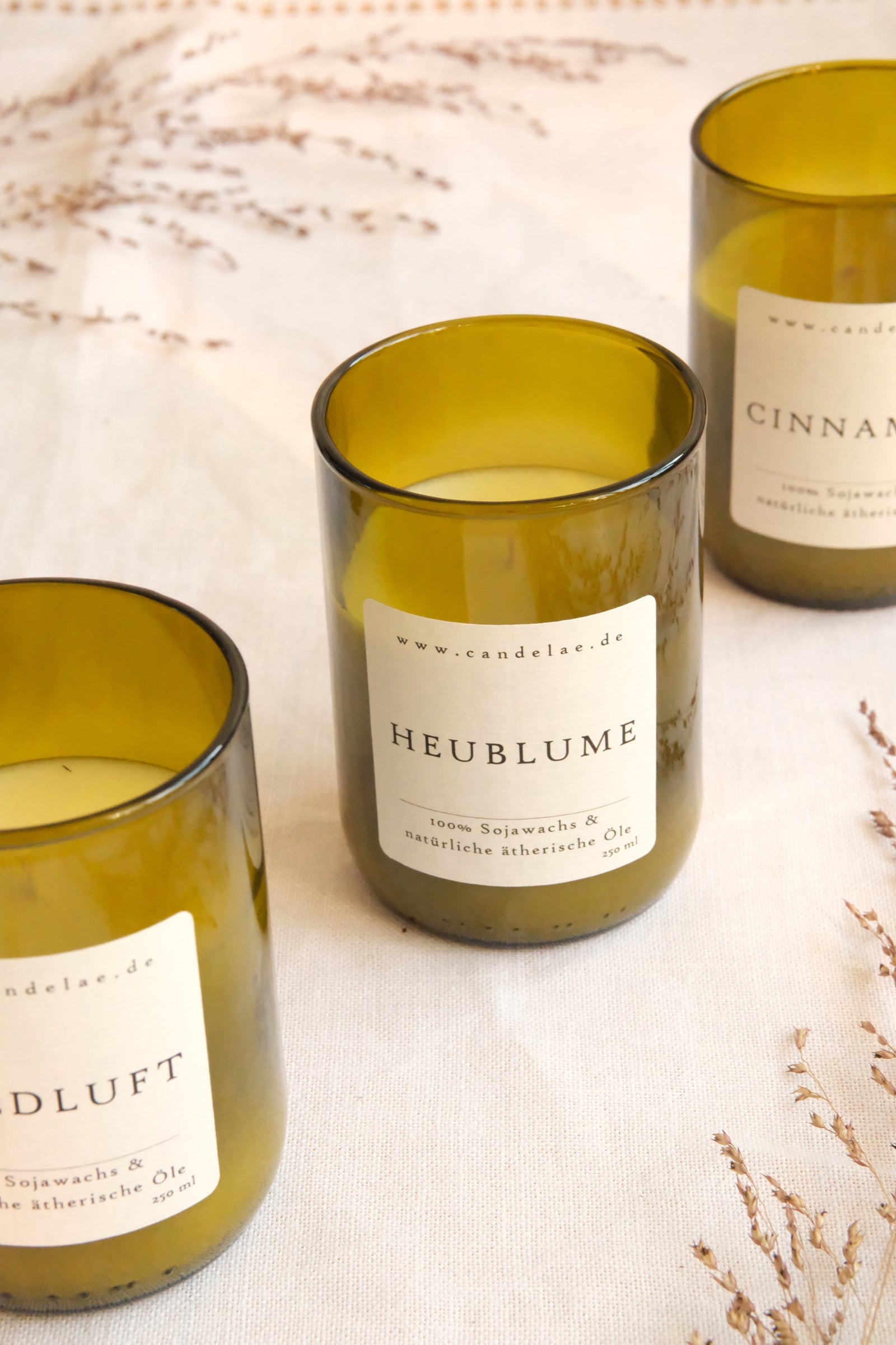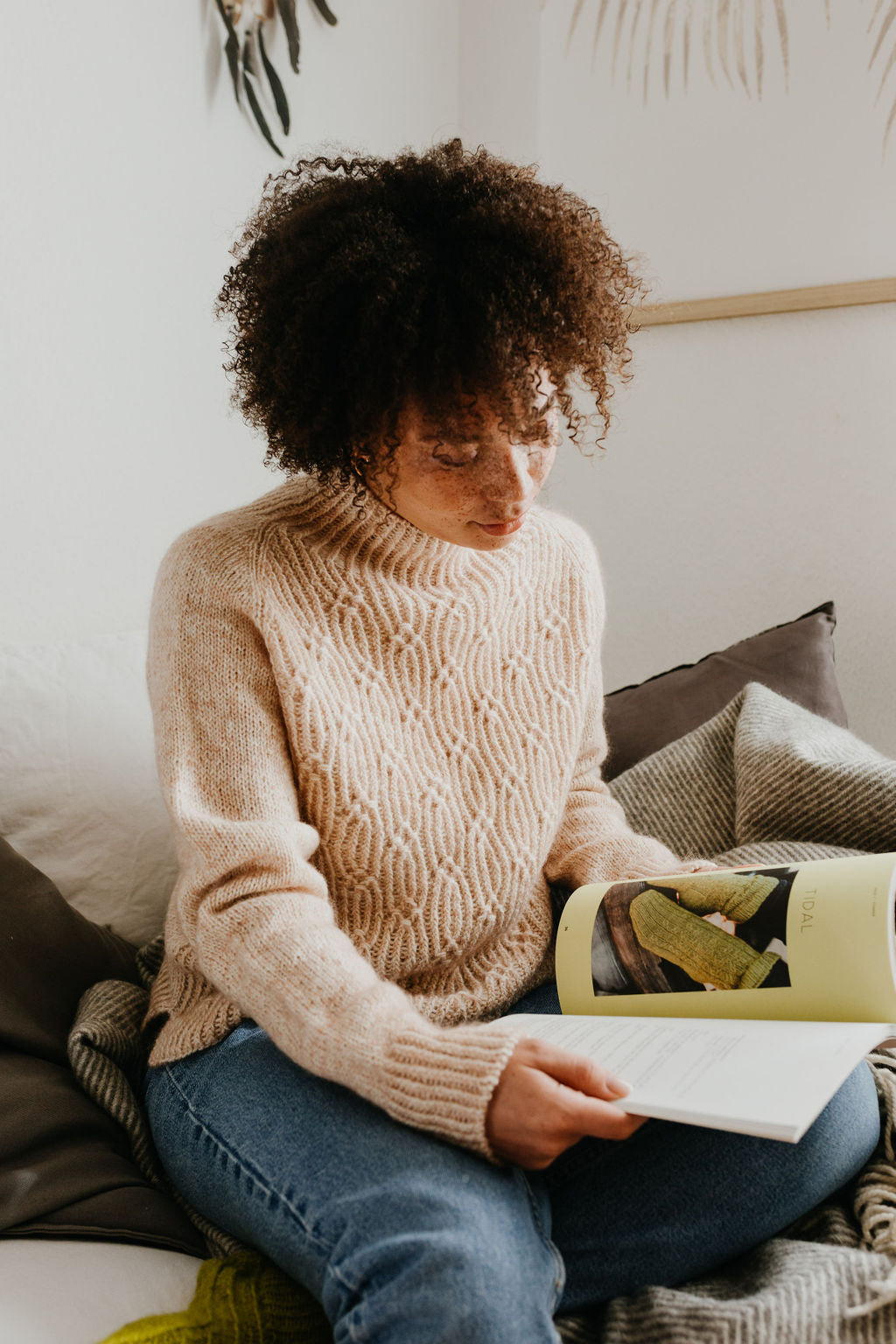Your Cart is Empty
Free Shipping on orders over €75 (Germany) | €125 (International) – We're on a short shipping break, but the webshop is open! Next shipping date: April 30
Free Shipping on orders over €75 (Germany) | €125 (International) – We're on a short shipping break, but the webshop is open! Next shipping date: April 30
Notions & Gifts
Books & Magazines
Patterns
- Annika Scheer | Rosemary & Pines Fiber Arts
- Ayano Tanaka
- Barbara Gottwik
- Crystal Hiatt
- Elena Solier Jansà
- Emily Joy Rickard
- Emma Ducher
- Fiona Alice
- Fiona Munro
- Imke von Nathusius
- Jennifer Brou
- Jill Thompson Beach
- Joan Forgione | Paper Moon Knits
- Julia Exner
- Kjerstin Rovetta
- Ksenia Naidyon | Life is Cozy
- Madeleine Renarde
- Makenzie Alvarez
- Making Stories
- Maria Muscarella
- Marina Skua
- Marthe Forodden
- Rebekka Mauser
- Renate Kamm
- Susan Schädler
- Tania Dejoie
- Valentina Cosciani
- Vanessa Pellisa
- Annika Scheer | Rosemary & Pines Fiber Arts
- Ayano Tanaka
- Barbara Gottwik
- Crystal Hiatt
- Elena Solier Jansà
- Emily Joy Rickard
- Emma Ducher
- Fiona Alice
- Fiona Munro
- Imke von Nathusius
- Jennifer Brou
- Jill Thompson Beach
- Joan Forgione | Paper Moon Knits
- Julia Exner
- Kjerstin Rovetta
- Ksenia Naidyon | Life is Cozy
- Madeleine Renarde
- Makenzie Alvarez
- Making Stories
- Maria Muscarella
- Marina Skua
- Marthe Forodden
- Rebekka Mauser
- Renate Kamm
- Susan Schädler
- Tania Dejoie
- Valentina Cosciani
- Vanessa Pellisa

Issue 10 Patterns – Now Available as Individual PDFs!

All Patterns
About Us
We're here to help you stitch sustainability into every aspect of your making.
With our carefully curated selection of non-superwash, plastic-free yarns and notions, we have everything you need to get started on your next project - and the one after that.
Here's to a wardrobe of knits we love and want to wear for years to come!
We're here to help you stitch sustainability into every aspect of your making.
With our carefully curated selection of non-superwash, plastic-free yarns and notions, we have everything you need to get started on your next project - and the one after that.
Here's to a wardrobe of knits we love and want to wear for years to come!
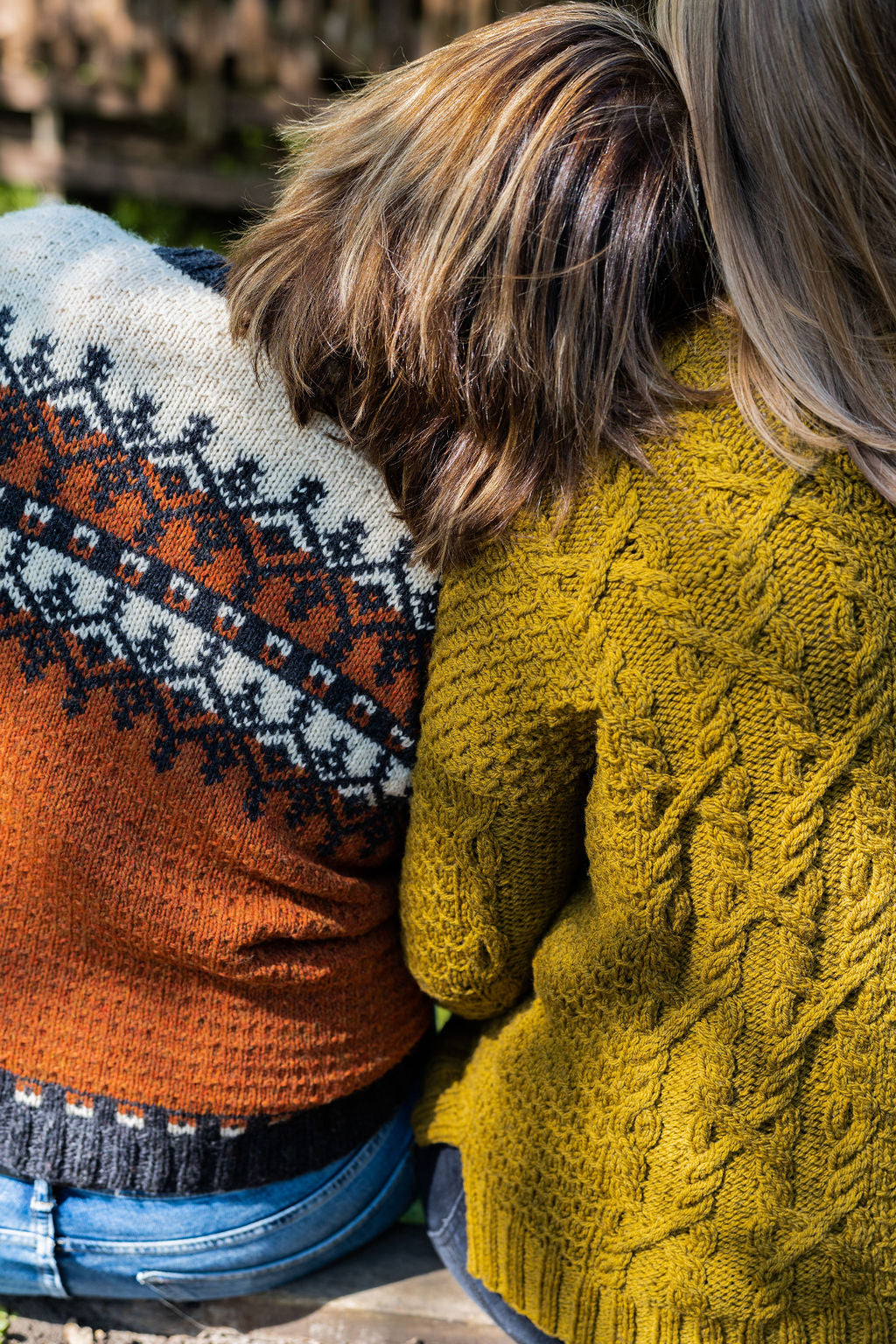
Our Sustainability Pledge

Our Blog
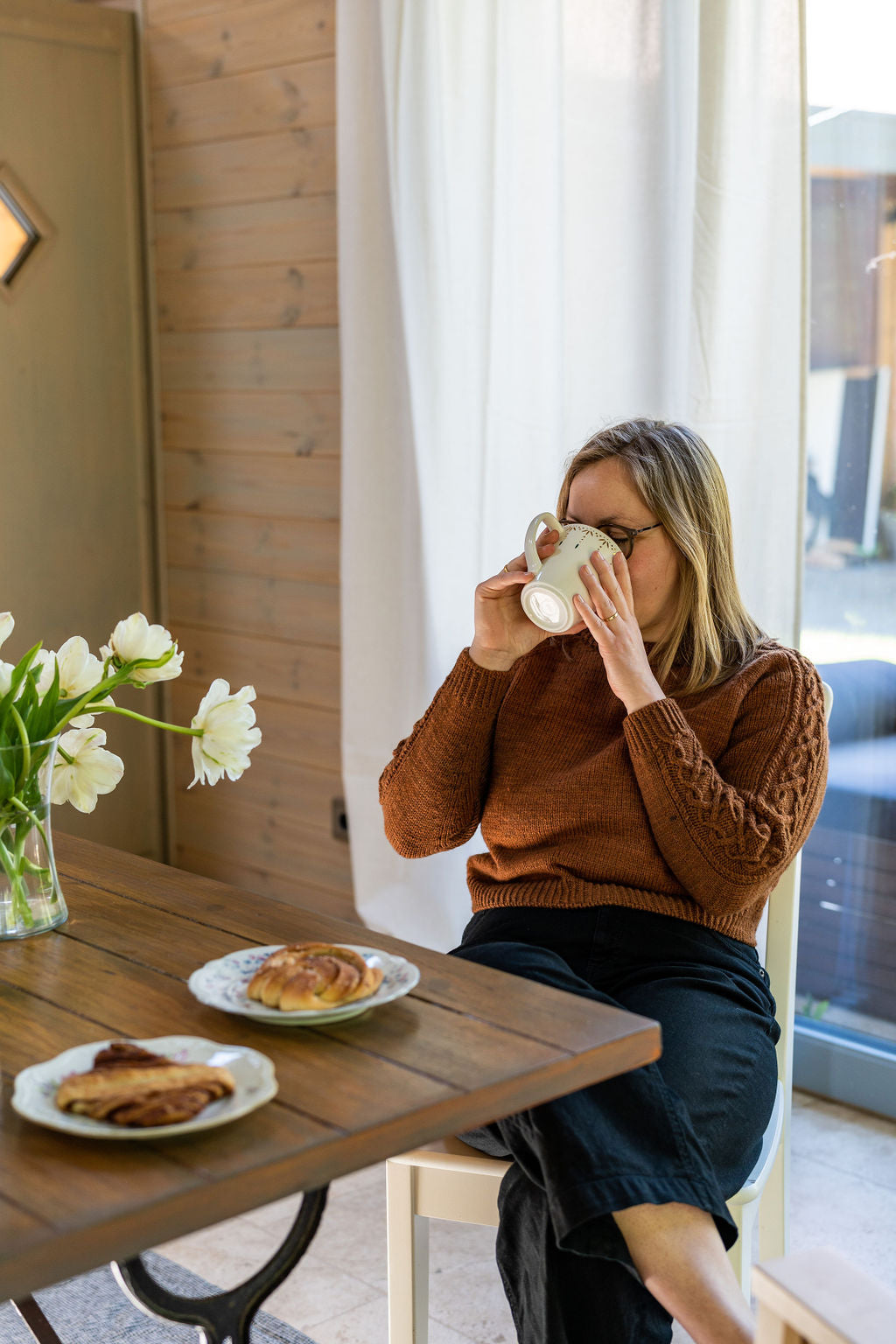
Our Podcast
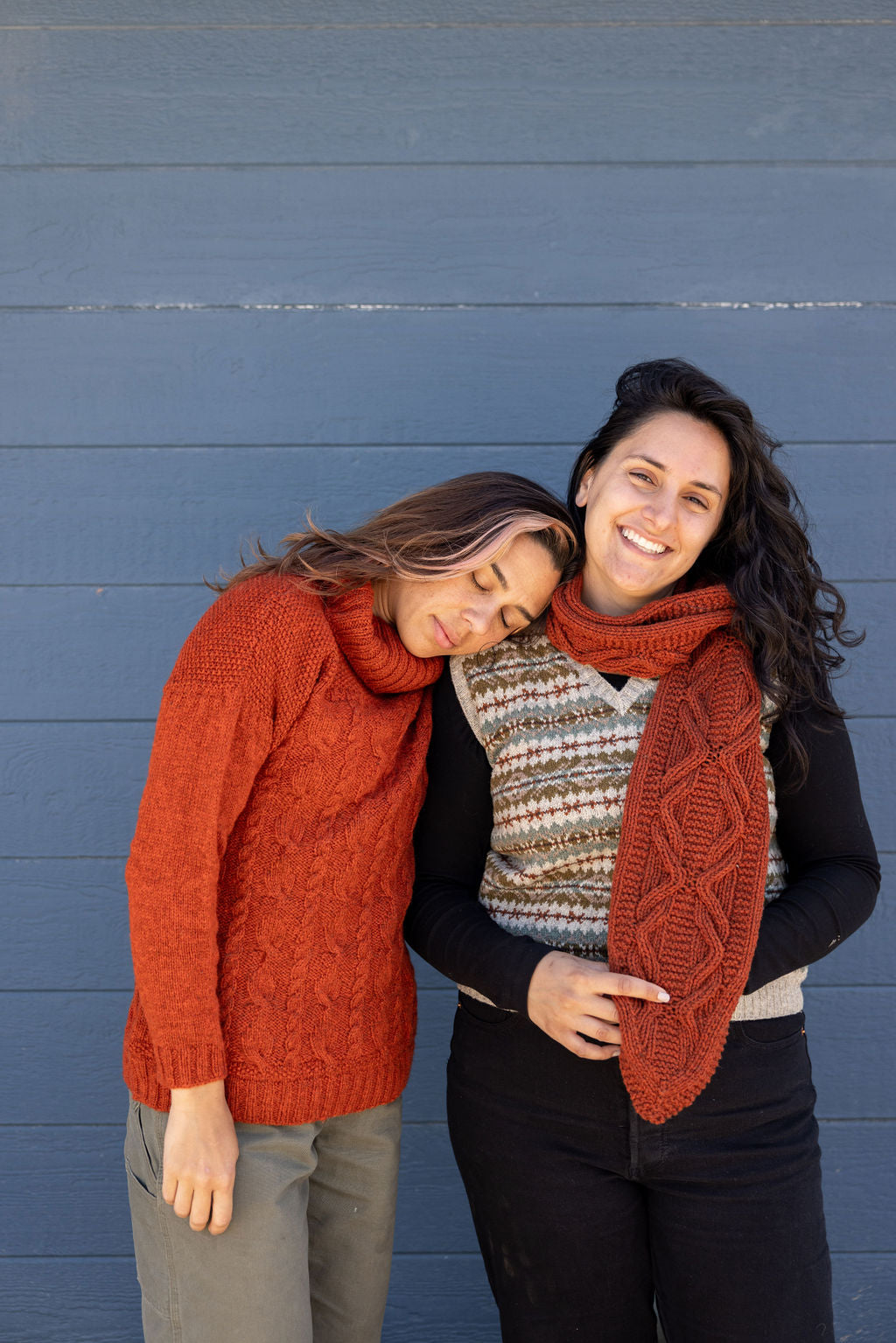
The Making Stories Collective
Combining Sizes In Knitting Patterns
June 17, 2021 6 min read
Hello friends! It's Claire here and I'm back chatting once again about fit issues we get in our knitting. Today we're going to look at mixing and matching sizes in a knitting pattern. Why would we do that? Well, as you probably know, nearly all patterns are designed based on standard body sizes, but not many people fit perfectly into a standard body size. All our bodies are different, and just because one area of a pattern works for us, it doesn't mean the rest will.
So how do we find out if we need to mix and match? Let's take a look!
 Get Out Your Tape Measure!
Get Out Your Tape Measure!
Oftentimes, we are told to pick a pattern size based on our bust measurement. The idea is that as long as our new pullover/cardigan fits at the bust, then it should follow that it will fit all over assuming the rest of your body measurements fall in line with the standard sizing. This is a common mistake to make when choosing a pattern and size that will fit, and unfortunately, one that only comes to light after many hours of knitting. So let's stop that mistake from happening right away!
The chest measurement will often be the one highlighted in a pattern to help you choose your size, and unless otherwise stated by the designer, it's a great place to start. However, it's good to consider the rest of the sweater too. There will always be other measurements listed, either separately or on a schematic, so take the time to find out your own measurements for those areas too. Once you know those, you can compared them to the ones listed in the pattern and will be able to easily see which sizes work best for each area.
Here is a great tutorial on how to take your measurements!
Finished measurement v your measurements
It's good to bear in mind that the measurements listed in a pattern are finished measurements, meaning that it's the size your finished sweater will be with any ease added. How much ease there needs to be will either be based on the designers own ease suggestions, and therefore mentioned in the pattern, or your personal preferences. When you take your body measurements, there is no ease, so it's important to keep this in mind when choosing sizes.
If ease is something you find confusing or you're not sure what your preferred ease is, check out our blog post, 'Understanding Ease'!
Let's look at an example - you have picked a size based on your chest and it gives you your preferred amount of ease of 7.5 cm / 3". When you compare your other measurements to the finished measurements in the pattern, you find the same size will fit perfectly on your neck and shoulders too, but the upper arm finished measurement is exactly the same as your own measurement, so there will be zero ease. Depending on the style of the sweater, this may not be an issue at all and exactly what you are looking for, but it could also mean that you end up with tight, uncomfortable sleeves, leading to a sweater that never gets worn. You definitely don't want that.
So what size should you knit for the sleeves? This, again, comes back to the ease that you want in your sleeves, and as I mentioned above, it will depend on the suggested ease in the pattern or your own preference. Once you know though, you can easily work out which size will be best for you by doing the following;
Your upper arm measurement + how much ease you want = preferred finished upper arm measurement
Once you know your preferred finished measurement, look at the measurements listed for the upper arm in the pattern and choose the one that is closest. You are now working with two sizes in the pattern; one for the neck, yoke and body, and another for the sleeves, and you are well on your way to having a sweater that will fit you how you like!
But how do you combine two sizes?
So you know your body measurements, and you've compared them to the measurements in the pattern, and you can see where you need to combine different sizes, but how do you do that?
Unfortunately, just like with knitting patterns, there is no one size fits all answer. What it comes down to is how to adjust the length or width of a pattern so one size flows into another with as little disruption to the original pattern as possible. This means taking into account the style of the sweater (raglan, set-in sleeve, drop-shoulder, etc.) and any stitch patterns or design details it may have. We've talked a lot about adjusting length on the blog already, but what about width?
Adjusting width can be tricky, but we can apply a lot of what we discussed in our posts on adjusting the length and apply them here too, such as how to accommodate a stitch pattern. But let's look at a quick example of adjusting the width from one size to another to see how to do it.
Work out where you need to make the size adjustment.
We're going to continue our theoretical upper arm issue on a top-down, circular yoked sweater. The size that fits our chest is giving us no ease in the upper arm, but the next size up gives us ease of 2.5 cm/1", which is much more comfortable so we're going to size up for the sleeves.
Work out how many stitches you'll need to increase.
Let's say after picking up the underarm stitches, the original size had 56 sts in the upper arm, but the size you need has 62. You subtract the original stitch count from the new stitch count like so; 62 - 56 = 6 sts. You need to increase six stitches per sleeve to get your desired fit.
Where to add those increases.
Now, this is the tricky part! The important thing to keep in mind is if the rest of the measurements in the first size work for you, you want to add your extra sleeve stitches in a way that doesn't disrupt that. For example, if the first size for our yoked sweater fits you perfectly at the shoulders, you don't want those extra stitches to change that. Remember, you are adding an extra inch per sleeve, so that's two extra inches that, if not mindfully incorporated into the yoke, can affect the fit. In this case, I would add the extra stitches after all the yoke shaping is complete using raglan increases as follows;
-
Place markers separating the body and sleeve stitches.
-
On the next round, increase 1 stitch inside each of the sleeve markers [4 sts inc]
-
Repeat the increase round every other round twice more. [8 sts inc]
We have successfully added six stitches to each sleeve without affecting the yoke measurement. As we calculated the stitches we needed based on the number of sleeve stitches after picking up the underarm stitches, we've also not affected the chest measurement. When it comes to knitting the rest of the sleeves, you will follow the instructions for the new size.
So this is just one example of how to combine two sizes from a pattern, and it was a pretty straightforward issue to solve. As you can imagine, the more complex a pattern gets, the trickier it can be to work out how best to make your alterations. BUT - if you can work out which sizes in a pattern work best for each body measurement, it can take a lot of the guesswork out of it for you as you'll know how many stitches you need to adjust to.
It can definitely be daunting to adjust a pattern, and if you find yourself trying this out and getting lost, please don't worry! You are certainly not alone, and always remember that reaching out to the designer is also an option. They know their pattern inside-out, and they will be able to tell you if a certain alteration you would like to make is achievable, and if so, how best to do it.
Do you often combine sizes in knitting patterns, and if so, do you have any tips or advice for fellow knitters? Share in the comments below!
Leave a comment
Comments will be approved before showing up.
Also in Blog

6 Joyful Spring Knitting Patterns - My Current Favorites!
April 10, 2024 4 min read
Hi lovelies! Spring has sprung here in Berlin – as I am typing this (mid March), the buds on the chestnut tree out the window are a few days away from bursting, the forsythias are in full bloom, and our strawberry plants have started their comeback as well (leaves so far, but Aurin checks every day for berries :)).
So it's no surprise at all that today's blog post is very much inspired by the sun and the warmer days to come! I have put together a sweet roundup of 6 joyful spring knitting patterns, all of which I'd love to have on my needles soon. (If someone can get me an extra day or two per week to knit (oh, and to spin), I'd love that!)
The three yarns I've paired them with are my favorite spring / summer yarns: De Rerum Natura's Antigone, a delightful sport-weight linen yarn, Wooldreamers' Saona, a 50% Spanish cotton, 50% Spanish wool blend, and Natissea's Pernelle, our newest spring yarn: A 100% European hemp yarn!

Get to Know: Pernelle, our first 100% hemp yarn!
April 02, 2024 3 min read 1 Comment
Hi lovelies! As you might know, we are slowly, surely expanding the portfolio of the shop – I am always on the lookout for wonderful sustainable yarns that might fill gaps we still have, and one that was on the list since last summer was an additional spring / summer yarn.
When I learned about Natissea, a French yarn company dedicated to organic plant yarns, from Audrey Borrego last year, I immediately contacted them to order some samples. As soon as I had Pernelle, their 100% European hemp yarn, on the needles, it was love – grippy, but not ropey, with a lovely drape that only got stronger after a good washing and blocking session.
The shade cards had me swooning too – a really comprehensive, well-composed range of colors with something for everyone in it, from neutrals to spring-inspired pastels to deep jewel tones.
So I was so pleased when Natissea accepted us as a stockist – and I am extra excited to introduce Pernelle to you. Our first 100% hemp yarn, perfect for summer tops, T-Shirts, and lightweight sweaters!
I reached out to Mathilde over at Natissea and she graciously agreed to answer a few questions about Pernelle. I loved reading her answers!

Issue 11 - in and out by Liza Laird
March 11, 2024 1 min read 2 Comments
Hello lovelies!
I am back today with a slightly unusual post that starts with a big, big apology to Liza Laird. Liza is a wonderful author (you might know her book Yoga of Yarn), knitter, teacher and yogi, and we were supposed to publish her beautiful poem "in and out", inspired by the ocean, in our Issue 11, "Seashore".
While I was putting the final touches on our layout, I realized that we had a spread too many (we always print in increments of 4 pages, or 2 spreads) and inadvertently cut the spread with Liza's poem instead of the photo spread I meant to delete.
Who Is Making Stories?
We're a delightfully tiny team dedicated to all things sustainability in knitting. With our online shop filled with responsibly produced yarns, notions and patterns we're here to help you create a wardrobe filled with knits you'll love and wear for years to come.
Are you part of the flock yet?
Sign up to our weekly newsletter to get the latest yarn news and pattern inspiration!
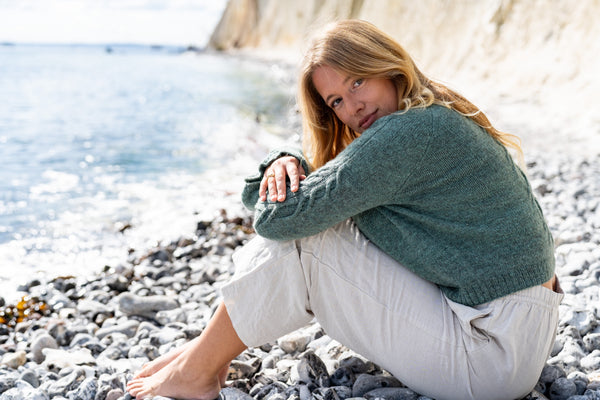
Join the Making Stories flock!
Every Tuesday our newsletter arrives in your inbox, full to the brim with Making Stories goodness. If you would like to join in on the fun, fill in the form below.
As a thank you, we gift you a digital publication of your choice!

